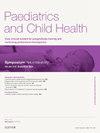儿科重症监护病房的肾脏替代疗法
Q3 Medicine
引用次数: 0
摘要
急性肾损伤(AKI)和慢性肾脏疾病(CKD)是儿科重症监护病房(picu)的重要问题,AKI影响多达50%的危重患儿。肾替代疗法(RRT)对于治疗这些疾病至关重要,可用的治疗方式包括间歇性血液透析(IHD)、持续肾替代疗法(CRRT)和腹膜透析(PD)。本文根据肾脏疾病:改善全球预后(KDIGO)指南定义了AKI和CKD,并概述了RRT的关键适应症,如严重电解质异常、液体过载超过10%、代谢性酸中毒和毒素清除。解释了rrt中溶质清除的基本原理,包括扩散、超滤、对流和吸附。此外,文章回顾了必要的考虑因素,如血管通路,抗凝策略和RRT在需要体外生命支持(ECLS)的新生儿和儿童中的独特挑战。CRRT允许精确和渐进的溶质和液体去除,使其成为血流动力学不稳定患者的理想选择。然而,它需要体外循环,大直径血管通路和抗凝,这可能会带来挑战,特别是在新生儿中。相比之下,PD可以通过经皮导管快速启动,避免与中心静脉通路相关的风险(血栓形成和出血)。相反,PD的溶质和液体清除率不如CRRT有效,并且不适合近期腹部手术或先天性异常的患者。RRT模式的选择取决于儿童的临床状况、可用资源和机构专业知识。这篇综述强调了个体化RRT策略的必要性,以改善危重儿童的预后和生存率。本文章由计算机程序翻译,如有差异,请以英文原文为准。
Renal replacement therapy in the paediatric intensive care unit
Acute kidney injury (AKI) and chronic kidney disease (CKD) are significant concerns in paediatric intensive care units (PICUs), with AKI affecting up to 50% of critically ill children. Renal replacement therapy (RRT) is essential for managing these conditions, with available modalities including intermittent haemodialysis (IHD), continuous renal replacement therapy (CRRT), and peritoneal dialysis (PD). This article defines AKI and CKD based on the Kidney Disease: Improving Global Outcomes (KDIGO) guidelines and outlines the key indications for RRT, such as severe electrolyte abnormalities, fluid overload exceeding 10%, metabolic acidosis and toxin clearance. The fundamental principles of solute clearance in RRT—including diffusion, ultrafiltration, convection, and adsorption—are explained. Additionally, the article reviews essential considerations such as vascular access, anticoagulation strategies and the unique challenges of RRT in neonates and children requiring extracorporeal life support (ECLS). CRRT allows precise and gradual solute and fluid removal, making it ideal for haemodynamically unstable patients. However, it requires an extracorporeal circuit, large-bore vascular access and anticoagulation which can pose challenges, particularly in neonates. In contrast, PD can be initiated quickly via a percutaneous catheter, avoiding the risks associated with central venous access (thrombosis and bleeding). Conversely PD solute and fluid clearance rates are less effective than CRRT, and it is unsuitable for patients with recent abdominal surgery or congenital anomalies. The choice of RRT modality depends on the child's clinical condition, available resources, and institutional expertise. This review highlights the need for individualised RRT strategies to improve outcomes and survival in critically ill children.
求助全文
通过发布文献求助,成功后即可免费获取论文全文。
去求助
来源期刊

Paediatrics and Child Health (United Kingdom)
Medicine-Pediatrics, Perinatology and Child Health
CiteScore
1.20
自引率
0.00%
发文量
70
 求助内容:
求助内容: 应助结果提醒方式:
应助结果提醒方式:


